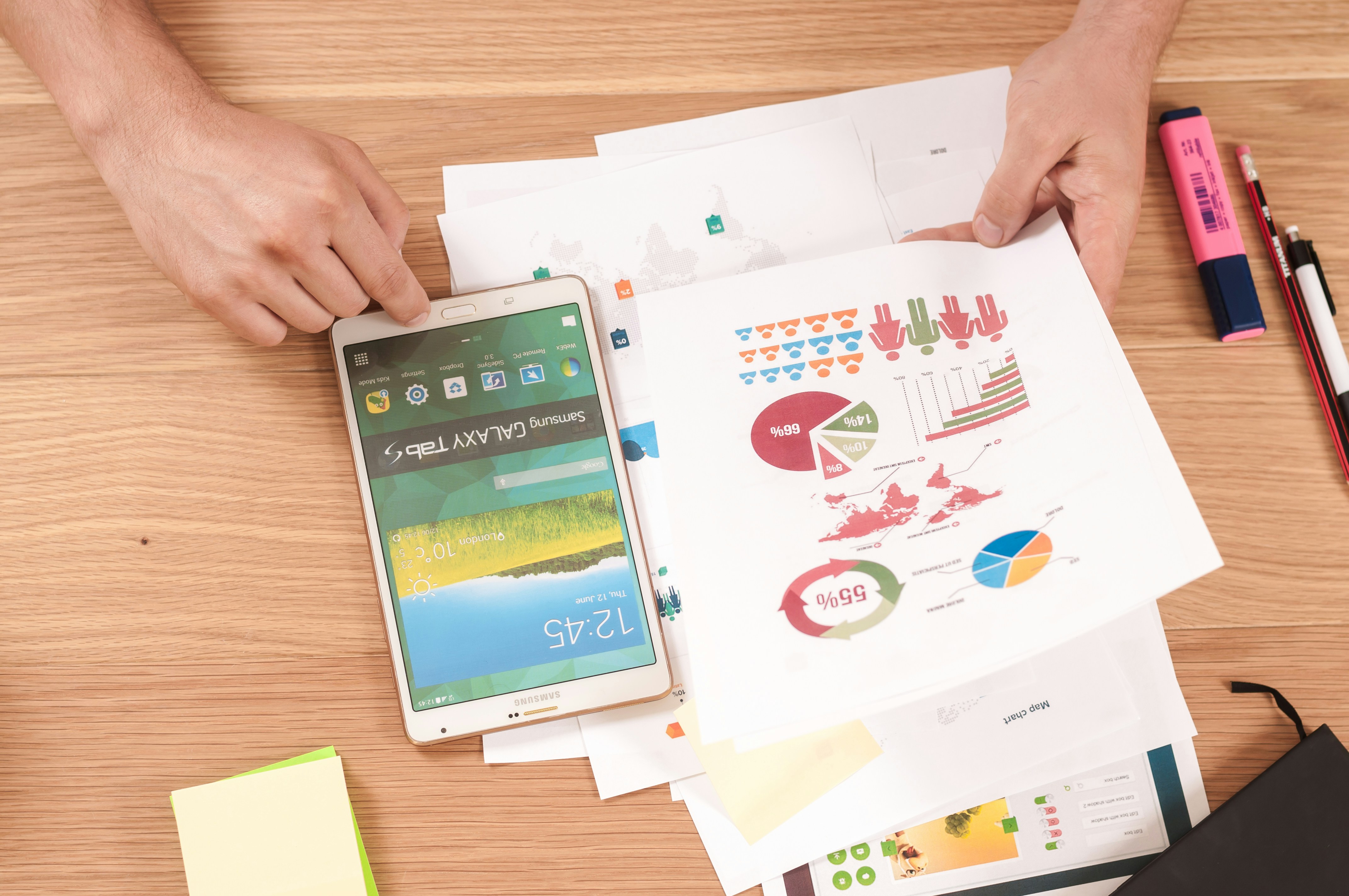How to Optimize Each of the Sales Funnel Stages for Better Conversions
Aug 13, 2024
It’s frustrating to see leads drop off before they reach the finish line. You invest so much time and energy into attracting prospects and nurturing them toward a purchase, only to watch your efforts go to waste as they abandon the journey altogether. Understanding sales funnel stages can help you pinpoint exactly where your funnel fails to optimize conversions and improve your sales skills. This piece will help you identify the various stages of a sales funnel and how to optimize each for better conversions.
One effective way to improve conversions at each sales funnel stage is by generating personalized videos at scale. Dopplio’s solution can help you create and automate the production of custom videos for each prospect so that you can send them targeted content tailored to their interests and preferences, improving engagement and driving them to take action.
Table of Contents
10 Ways to Optimize Each of the Sales Funnel Stages for Better Conversions
What are common sales funnel mistakes, and how can they be avoided?
How to Align Your Sales Funnel with Customer Journey Mapping?
Get 3x Higher Reply Rates with Our Personalized Video Creator.
Understanding the Sales Funnel

A sales funnel is a marketing model that illustrates potential customers' journey from first becoming aware of a product or service to purchasing. The funnel is typically divided into several stages: awareness, interest, consideration, intent, evaluation, and purchase. This visual representation helps businesses understand and manage the customer journey effectively.
Why Is a Sales Funnel Important?
The sales funnel is critical for several reasons.
Guides Customer Journey
The sales funnel provides a structured framework for helping businesses understand and manage the customer journey. It ensures that prospects receive the right information at the right time.
Identifies Customer Needs
By analyzing each stage of the funnel, businesses can identify customer needs and pain points, allowing them to tailor their marketing efforts accordingly.
Enhances Marketing Strategies
The funnel helps marketers develop targeted strategies for each stage, increasing the likelihood of converting leads into customers.
Improves Lead Nurturing
Understanding the funnel allows businesses to implement effective lead-nurturing strategies, keeping prospects engaged throughout their journey.
Increases Conversion Rates
Effective sales funnel management can lead to higher conversion rates. Data shows that companies that optimize their sales funnels can increase conversion rates by up to 50%.
Facilitates Performance Measurement
The sales funnel provides a clear framework for measuring performance at each stage, enabling businesses to track progress and identify areas for improvement.
Enables Resource Allocation
By understanding where prospects drop off in the funnel, businesses can allocate resources more effectively to areas that need attention.
Supports Sales Forecasting
The funnel allows businesses to forecast sales more accurately by analyzing conversion rates and customer behavior at each stage.
Enhances Customer Experience
A well-managed sales funnel creates a seamless experience for customers, helping them navigate their journey smoothly and increasing satisfaction.
Builds Brand Loyalty
Businesses can foster trust and loyalty by providing valuable content and support throughout the funnel, encouraging repeat purchases and referrals.
Informs Product Development
Insights gained from analyzing the sales funnel can inform product development and improvements based on customer feedback and preferences.
Encourages Continuous Improvement
The sales funnel framework encourages businesses to continuously assess and refine their strategies based on data and performance metrics.
Data on Conversion Rates
Effective sales funnel management can increase conversion rates by up to 50%. For example, a company that identifies bottlenecks in its funnel and implements targeted strategies can significantly enhance its overall sales performance.
Related Reading
• Sales Process
• What Is B2B Sales
• Sales Pitch Examples
• Sales Techniques
• B2C Sales
• Entry Level Sales
• Sales Metrics
• How To Get Into Sales
Why Optimizing Each Stage is Crucial

The Funnel Process: Why Each Stage Matters
Optimizing each stage of the sales funnel is essential to ensure maximum conversions and reduce drop-offs. Each stage presents unique challenges and opportunities, and addressing these can lead to a more efficient sales process.
Awareness Stage: Letting People Know You Exist
If potential customers are unaware of your product, they cannot enter the funnel. Effective marketing strategies like social media campaigns and SEO can enhance visibility.
Interest Stage: Keeping Prospects Engaged
Once awareness is established, it’s crucial to engage prospects. If they lose interest, they may drop out of the funnel. Utilizing targeted content and personalized messaging can keep them engaged.
Consideration Stage: Helping Prospects Evaluate Their Options
At this point, prospects are evaluating their options. Providing clear information and addressing concerns can prevent drop-offs.
Intent Stage: Encouraging Action
Prospects show intent to purchase but may hesitate. Offering incentives, such as discounts or free trials, can encourage them to move forward.
Evaluation Stage: Standing Out Among the Competition
Here, prospects compare your product with competitors. Highlighting unique selling points and customer testimonials can help sway their decision.
Purchase Stage: Ensuring a Smooth Checkout Process
Ensuring a smooth checkout process is vital. Complicated procedures can lead to cart abandonment.
Try Dopplio And Generate Personalized Video
Dopplio is transforming personalized outreach for sales and marketing teams. We blend authentic human-made videos with AI personalization, giving you the best of both worlds - the genuine feel of real people with the scalability of technology. Our solution delivers 3x higher reply rates compared to traditional methods.
With Dopplio, you can create a single charismatic video and then personalize it for thousands of leads, greeting each by name. Our platform allows you to generate videos in bulk, automatically voice clone and lip-sync to maintain authenticity, and integrate seamlessly with Zapier to kick off your existing workflows. Plus, we offer the option to share your personalized videos as attention-grabbing GIFs.
The best part? Dopplio provides all this at just a tenth of the cost of enterprise options. So, if you're a tech sales rep or marketing agency looking to boost conversions, Dopplio offers the perfect blend of personalization, scalability, and cost-effectiveness.
Try Dopplio and generate personalized videos at scale today!
10 Ways to Optimize Each of the Sales Funnel Stages for Better Conversions

When it comes to improving your sales funnel, you'll see both quick wins and long-term results if you focus on optimizing every stage of the funnel. Below are ten strategies for improving funnel conversions through optimization.
1. Awareness Stage
Content Marketing
Create valuable content that addresses potential customers' pain points to attract them to your brand.
SEO Optimization
Optimize your website and content for search engines to increase organic traffic.
2. Interest Stage
Engaging Social Media Campaigns
Utilize social media platforms to share engaging content and interact with your audience.
Email Marketing
Develop targeted email campaigns to nurture leads and inform them about your offerings.
3. Consideration Stage
Webinars and Demos
Offer live demonstrations or webinars to showcase your product's features and benefits.
Case Studies
Share success stories and case studies to build credibility and trust.
4. Intent Stage
Clear Calls-to-Action (CTAs)
Use strong and clear CTAs that guide prospects toward the next steps in the buying process.
Limited-Time Offers:
Create urgency with time-sensitive promotions to encourage immediate action.
5. Evaluation Stage
Comparison Guides
Provide comparison guides that highlight the advantages of your product over competitors.
Customer Testimonials
Showcase positive reviews and testimonials to build trust and credibility.
6. Purchase Stage
Simplified Checkout Process
Streamline the process to reduce friction and cart abandonment.
Multiple Payment Options
Offer various payment methods to accommodate different customer preferences.
7. Post-Purchase Stage
Follow-Up Emails
Send personalized follow-up emails to thank customers and encourage feedback. Loyalty Programs: Implement loyalty programs to reward repeat customers and encourage referrals.
8. Analytics and Tracking
Monitor Metrics
Use analytics tools to track key performance indicators (KPIs) at each stage of the funnel.
A/B Testing
Conduct A/B tests to identify the most effective strategies and optimize accordingly.
9. Customer Feedback
Surveys and Polls
Gather customer feedback to understand their experiences and identify areas for improvement.
User Experience Testing
Conduct usability tests to ensure a smooth customer journey through the funnel.
10. Continuous Improvement
Regular Reviews
Assess and refine your sales funnel strategies regularly based on performance data and market trends.
Adapt to Changes
Be flexible and ready to adapt your strategy to changing customer needs and preferences.
Try Dopplio And Generate Personalized Video
Dopplio is transforming personalized outreach for sales and marketing teams. We blend authentic human-made videos with AI personalization, giving you the best of both worlds—the genuine feel of real people with the scalability of technology. Our solution delivers 3x higher reply rates compared to traditional methods. With Dopplio, you can create a single charismatic video and then personalize it for thousands of leads, greeting each by name.
Our platform allows you to generate videos in bulk, automatically voice clone and lip-sync to maintain authenticity, and integrate seamlessly with Zapier to kick off your existing workflows. Plus, we offer the option to share your personalized videos as attention-grabbing GIFs. The best part? Dopplio provides all this at just a tenth of the cost of enterprise options. So, if you're a tech sales rep or marketing agency looking to boost conversions, Dopplio offers the perfect blend of personalization, scalability, and cost-effectiveness.
Try Dopplio and generate personalized videos at scale today!
How Can Data Analytics Improve Sales Funnel Optimization?

Track Customer Behavior to Identify Sales Funnel Bottlenecks
Data analytics allows businesses to monitor how customers interact with each stage of the funnel, pinpointing where drop-offs occur. This insight helps teams understand how to improve the customer experience and keep leads moving toward a purchase.
Measure Conversion Rates at Each Sales Funnel Stage
Sales funnels exist to track how leads move from one stage to the next until they ultimately convert. Businesses can identify areas for improvement by analyzing conversion rates at each stage. For instance, if there’s a significant drop-off between the proposal stage and closing, data analytics can help uncover why this is happening so teams can address the issue and boost sales.
Identify Customer Behavior Patterns
Data analytics can reveal patterns in customer behavior, helping businesses understand what influences purchasing decisions. For example, specific characteristics of leads that aren’t converting may point to a more significant issue, such as a problem with the product or service or a lack of trust in the company.
Segment Audiences Based on Behavior
Analytics enables businesses to segment their audience based on behavior, allowing for more targeted marketing efforts. For instance, leads stuck in the sales funnel may show particular traits indicating they aren’t moving forward. By isolating these traits, sales teams can create customized outreach to address the specific concerns of these leads and help move them along the funnel.
Use Predictive Analytics to Forecast Future Customer Behavior
Businesses can use predictive analytics to forecast future customer behavior and adjust strategies accordingly. In terms of sales funnel optimization, this means that even before leads enter the funnel, organizations can analyze historical data to predict how they will move through the stages and identify potential roadblocks. This allows teams to address issues proactively before they become problematic.
Gain A/B Testing Insights
Data analytics provides insights from A/B testing, helping businesses determine the most effective strategies. In the context of sales funnel optimization, A/B testing can be used to compare different approaches for improving performance at specific funnel stages.
Analyze Customer Feedback
Customer feedback is an invaluable resource for identifying bottlenecks in the sales funnel. Analyzing feedback can highlight pain points and areas for improvement within the funnel. For example, if customers report needing clarification on a particular step in the process, this can indicate a problem with your sales funnel that needs to be addressed.
Allocate Resources Effectively
Data-driven insights can help businesses allocate resources more effectively to areas with the highest returns. Optimizing the sales funnel means that when analytics uncover specific bottlenecks, teams can identify what tools, technologies, or personnel can help them address the issue and improve performance.
Benchmark Performance Against Industry Standards
Businesses can compare their funnel performance against industry benchmarks to identify areas for improvement. This type of performance benchmarking is a diagnostic tool that allows organizations to uncover specific sales funnel issues and develop a plan to resolve them.
Continuously Monitor the Sales Funnel
Ongoing data analysis allows for real-time adjustments to funnel strategies, ensuring optimal performance. By continuously monitoring the sales funnel, organizations can identify new bottlenecks as they arise and quickly address them to avoid any negative impact on conversions.
Dopplio is transforming personalized outreach for sales and marketing teams. We blend authentic human-made videos with AI personalization, giving you the best of both worlds and the genuine feel of real people with the scalability of technology. Our solution delivers 3x higher reply rates compared to traditional methods. With Dopplio, you can create a single charismatic video and then personalize it for thousands of leads, greeting each by name.
Our platform allows you to generate videos in bulk, automatically voice clone and lip-sync to maintain authenticity, and integrate seamlessly with Zapier to kick off your existing workflows. Plus, we offer the option to share your personalized videos as attention-grabbing GIFs.
The best part? Dopplio provides all this at just a tenth of the cost of enterprise options. So, if you're a tech sales rep or marketing agency looking to boost conversions, Dopplio offers the perfect blend of personalization, scalability, and cost-effectiveness. Try Dopplio and generate personalized videos at scale today!
What are common sales funnel mistakes, and how can they be avoided?

Avoiding the First Mistake in the Sales Funnel: Neglecting the Awareness Stage
Failing to generate sufficient awareness of a product or service can cause serious problems for any business. Without a solid base of potential customers, the sales funnel will be empty, which means no sales. To avoid this issue, businesses should invest in marketing strategies that enhance visibility, such as SEO and content marketing.
Stopping the Crickets: Lack of Engagement
Once customers begin to show interest in a product, keeping them engaged is vital until they are ready to buy. Failing to do so can cause serious problems. For example, if a customer is investigating a specific car, but no one at the dealership reaches out to assist or provide any information.
The customer will likely move on to another dealership, and there’s a good chance that the other dealership will win the sale. To avoid this issue, businesses can use targeted content and social media interactions to keep prospects engaged.
Avoiding Overload: Overloading Information
When prospects reach the consideration stage of the sales funnel, they will look for more information about your specific product or service. At this point, it is essential to avoid the temptation to provide too much information. While some customers may appreciate the comprehensive details, others will feel overwhelmed and need clarification. To avoid this problem, simplify messaging and focus on essential benefits.
Don’t Ignore Intent Signals
When prospects begin to show interest in buying, such as through specific actions on your website, don’t ignore them, instead, use clear CTAs and incentives to encourage action.
Streamline the Checkout Process: Complex Purchase Process
When a customer is ready to buy, making the process as simple as possible is crucial. This is the time to eliminate distractions and guide the customer smoothly through the purchase process. If there are any hiccups, such as an overly complicated checkout process, it can cause customers to abandon their carts and lose interest in your product altogether. To avoid this, streamline the checkout process to reduce friction.
Inadequate Follow-Up: Not Following Up with Customers After Purchase
The end of a sale is often an afterthought for many businesses. However, this needs to be corrected. A lot can be done to improve customer satisfaction and increase the chances of repeat business by implementing follow-up strategies to nurture customer relationships.
Lack of Personalization: Failing to Personalize Marketing Messages
A common mistake many businesses make at various sales funnel stages is failing to personalize marketing messages. The reality is that most consumers today expect some level of personalization. To avoid this issue, use data analytics to tailor messages to individual customer preferences.
Ignoring Customer Feedback: Not Gathering or Acting on Customer Feedback
Another common mistake businesses make at various sales funnel stages is not gathering or acting on customer feedback. This can lead to a more-than-satisfactory customer experience that can hurt sales now and in the future. Regularly collect feedback and make adjustments based on insights to avoid this issue.
Consistency Is Key: Inconsistent Messaging
Another common mistake businesses make at various sales funnel stages is failing to personalize marketing messages. The reality is that most consumers today expect some level of personalization. To avoid this issue, use data analytics to tailor messages to individual customer preferences.
Neglecting Post-Purchase Engagement: Failing to Engage Customers After the Sale
Once a customer makes a purchase, he or she will no longer be a prospect but a new customer. It’s vital to continue engaging this customer to improve their experience and boost the chances of repeat business. To avoid losing customers, develop loyalty programs and follow-up communications.
Not Utilizing Data Analytics: Ignoring the Insights Provided by Data Analytics
Sales funnel performance can be improved dramatically by regularly analyzing and assessing the information collected on customer behavior during the various sales funnel stages. Adjust your strategies based on the data analytics to avoid getting stuck in a rut.
Overlooking Competitor Analysis: Failing to Assess Competitor Strategies
Another error that can be made at any sales funnel stage is failing to assess competitor strategies. Regardless of your industry, it’s likely that there are other businesses out there with similar offerings. To avoid getting left behind, conduct regular competitor analysis to identify areas for improvement.
Inadequate Training for Sales Staff: Not Providing Sufficient Training for Sales Personnel
Sales teams can make or break your business’s sales funnel performance. If they are undertrained or not appropriately trained, they may be unable to perform their jobs effectively, leading to poor sales funnel performance. Invest in ongoing training and development for sales teams to avoid this issue.
Ignoring Seasonal Trends: Not Adapting Strategies to Seasonal Trends
Many businesses must be aware of seasonal trends' impact on sales funnels. Ignoring these trends can lead to poor performance and missed opportunities. To avoid this problem, historical data must be analyzed to anticipate and prepare for seasonal fluctuations.
Underestimating the Importance of Retention: Focusing Solely on Acquisition Rather Than Retention
While it’s true that the sales funnel is vital for acquiring new customers, it’s important to remember that not all of them will be new. Instead, some will be returning customers who are making repeat purchases. Underestimating the importance of retention can lead to poor sales funnel performance. To avoid this issue, strategies should be implemented to retain customers and encourage repeat business.
Related Reading
• Marketing Vs Sales
• Is Sales A Good Career
• Types Of Sales Jobs
• Types Of Sales Strategies
• Sales Roles
• Sales Psychology
• Client Prospecting
• Sales Kpis
• Relationship Selling
• Sales Programs
• Sales Trends
How Do Sales Funnel Strategies Differ Between B2B and B2C?

The sales funnel for each type of business is structured similarly, but the sales processes can differ significantly. Visualizing the sales funnel as a pyramid, you start at the top with a large pool of potential customers that you narrow down through targeted sales processes to reach your goal. The differences between B2B and B2C sales funnels are as follows:
1. Target Audience
B2B sales funnels focus on businesses and decision-makers, while B2C sales funnels target individual consumers. In a B2B sales funnel, you will generate leads from organizations and companies that fit your ideal customer profile. Then, you’ll nurture those leads until they’re ready to purchase. In a B2C sales funnel, you’ll target customers looking to solve a problem or meet a particular need.
2. Length of the Funnel
A B2B sales funnel is typically longer than a B2C sales funnel. The B2B sales process can take several months or even years, especially for complex products or services requiring significant financial investments. This is due to the multiple decision-makers involved in the buying process and the complex purchasing processes. In contrast, B2C sales funnels are shorter and often take only a few days or weeks to complete. Individual consumers can make quicker purchasing decisions because there’s usually only one decision-maker in the B2C sales process.
3. Content Type
The type of content that’s most effective for B2B and B2C sales funnels is different. B2B sales funnels rely on informative content that helps establish trust and authority between the business and its prospective leads. This content often includes whitepapers, case studies, and industry reports. On the other hand, B2C sales funnels benefit from engaging content that focuses on capturing the attention of potential customers. This content typically includes social media posts, advertisements, and blog articles.
4. Sales Cycle
B2B sales funnels involve a more extended sales cycle that may include negotiations and contracts. Because B2B sales processes are complex, it’s common for there to be multiple interactions between the buyer and seller before a final decision is made. B2C sales funnels often involve impulse buying and shorter decision-making processes. Individual consumers can change their minds, but the sales cycles are typically shorter than B2B sales.
5. Relationship Building
Sales funnels in the B2B space require robust relationship-building strategies and ongoing communication. This is because of the complexity of the products or services sold and the lengthy sales processes. B2B buyers want to feel confident in their purchase decisions and that your business can deliver on its promises. This requires effective communication and a strong buyer and seller relationship. The B2C sales funnel focuses more on brand loyalty and customer engagement. While building relationships with individual customers is still essential, it’s not as crucial as in B2B funnels.
6. Lead Generation
B2B sales funnels utilize targeted outreach and networking to generate leads. This includes strategies like email outreach to warm contacts, connecting with decision-makers on LinkedIn, and attending industry conferences. B2C sales funnels use mass marketing and advertising strategies to reach potential customers. This includes tactics like social media marketing, pay-per-click advertising, and SEO.
7. Pricing Strategies
B2B sales often involve customized pricing and negotiations. Because the products or services being sold are typically complex, they may require customization to meet the needs of the buying organization. This can also lead to negotiations on price as well as contract terms. B2C sales typically use fixed pricing and promotions. Individual consumers expect a clear price for products or services and may also look for sales or discounts before purchasing.
8. Follow-Up Strategies
Following up with leads in B2B sales funnels requires personalized follow-ups and relationship management. Because B2B leads take a long time to make purchase decisions, it’s vital to tailor follow-up communication to address their pain points and needs. On the other hand, B2C sales funnels focus on automated follow-ups and customer retention strategies. After a customer purchases, businesses can use automated email sequences to improve their overall satisfaction and encourage repeat purchases.
9. Decision-Making Process
The decision-making processes for B2B and B2C sales funnels are different. B2B sales involve multiple stakeholders and a formal approval process. A single purchase may require the approval of a decision-maker, along with input from other team members and departments. In contrast, B2C sales typically involve individual decision-making. While others may influence a consumer’s decision, one person usually makes the final call.
10. Sales Tools
B2B sales funnels utilize CRM systems and sales enablement tools to improve their processes and achieve better results. These tools help businesses track their leads, improve communication, and create targeted content to help move them through the sales funnel. B2C sales funnels often rely on e-commerce platforms and marketing automation tools. For instance, an online store may use Shopify to sell its products and create targeted email marketing campaigns to engage its customers.
11. Customer Feedback
Feedback in B2B sales funnels involves detailed feedback and performance reviews. After a B2B transaction, the buying organization will likely conduct a performance review to evaluate your product or service and its impact on its operations. This can also include detailed customer feedback to satisfy all parties involved. B2C sales funnels focus on customer satisfaction surveys and reviews. After an individual customer makes a purchase, they often receive an automated email asking them to review their experience.
12. Branding Approach
Branding for B2B sales funnels prioritizes professional branding and industry authority. B2B buyers want products and services from businesses with proven industry expertise and experience. On the other hand, B2C sales funnels emphasize emotional branding and consumer connection. Individual customers want to feel a connection with the businesses they purchase from.
How to Align Your Sales Funnel with Customer Journey Mapping?

Aligning the sales funnel with the customer journey ensures prospects receive relevant information at each stage, enhancing their overall experience. It should feel seamless when a prospect transitions from one stage in the sales funnel to another. If, for example, a lead is moving from the awareness stage to the consideration stage, they should feel as if they are simply changing rooms rather than exiting one building and entering another.
This means that the information they receive as they transition between funnel stages is consistent with the content they have already engaged with. When your sales funnel is aligned with the customer journey, you can create a more organized and structured approach to transitioning leads through the sales process. Improved customer experience is one of the most important benefits of a sales funnel. Not only does it enhance your reputation as a business, but it also sets the foundation for improved sales performance.
Skyrocket Your Conversions with an Aligned Sales Funnel
A smooth alignment between the sales funnel and the customer journey can lead to higher conversion rates as customers feel supported. Without this structure, you risk losing leads who don’t know what to do next or feel overwhelmed by the transition. Organizing your sales process with the customer journey in mind allows you to create a smooth experience without sudden surprises or shifts. Instead, prospects can focus on learning about your offering and how it can help them before moving on to the next stage, which is often making a purchase.
Engage Prospects with Insight Into the Customer Journey
Understanding the customer journey allows businesses to engage prospects more effectively, providing timely and relevant content. The more you learn about your buyers’ journeys, the better equipped you will be to create the targeted content that speaks to their unique needs at each stage. As you attract leads to your website and they begin engaging with your content, you can identify precisely where they are concerning your business and its offerings. Then, as they transition through the sales funnel, you can promote communications that help both your business and the prospect.
Gain a Better Understanding of Customer Needs
Mapping the customer journey helps identify pain points and areas where customers may need additional support. By aligning this framework with the sales funnel, you can uncover gaps in your sales process where additional information can help prospects make more informed decisions. This reduces friction during the buying process and can help you close more deals.
Target Your Marketing Efforts to Specific Customer Needs
By aligning the funnel with the customer journey, businesses can tailor their marketing efforts to address specific customer needs and preferences. Instead of taking a generic approach to sales, this alignment allows you to get specific about who your targets are and what they want.
You can create content and sales communications that speak directly to these individuals so they feel you are having a one-on-one conversation with them. This targeted approach helps build trust and rapport with prospects and improves the chances of conversion.
Streamline Communication Between Sales and Marketing Teams
A well-aligned funnel facilitates clear communication between marketing and sales teams, ensuring a unified approach. When both teams understand the customer journey and how it relates to the sales funnel, they can work together to ensure an optimal experience for prospects. This alignment helps sales teams identify leads who are ready to purchase and engage with specific content related to their offering. This process allows sales to personalize their approach and speak directly to any outstanding buyer concerns, improving the chances of closing the deal.
Make Informed Decisions for Sales Process Improvement
Customer journey mapping provides valuable insights that can inform strategic decision-making. By aligning this framework with the sales funnel, you can understand how prospects transition through your sales process and where there may be gaps. This information can help you make informed decisions about improving your sales process to ensure better conversions over time.
Increase Customer Loyalty and Repeat Business
A positive customer experience throughout the journey can increase loyalty and repeat business. By aligning the sales funnel with the customer journey, you can ensure that even as leads transition into customers, they continue to receive relevant information that enhances their experience. This practice helps you build better customers who are more likely to return to your business for repeat purchases and refer others to you.
Allocate Resources Effectively to Improve Sales Performance
Understanding the customer journey allows businesses to allocate resources more effectively, focusing on areas that yield the highest returns. When you align this framework with the sales funnel, you can identify specific gaps in your sales process that require improvement. This practice allows you to optimize your sales funnel to improve performance and ensure better conversions over time.
Continuously Improve Sales Performance with Regular Reviews
Regularly reviewing and updating the alignment between the sales funnel and the customer journey can lead to ongoing performance improvements. As customer preferences change, keeping your sales process current is essential. By taking the time to understand how prospects transition through the funnel and what they expect to find as they do so, you can remain agile and improve both customer experience and sales performance over time.
Enhance Your Brand Reputation with Smooth Customer Experiences
Providing a seamless experience can enhance brand reputation and customer satisfaction. By aligning the sales funnel with the customer journey, you improve the experience for prospects and customers. As they transition into their journey of using your product or service, you can ensure they receive the information needed to succeed both during and after the sales process.
Create a Feedback Loop to Continuously Improve Sales Processes
Aligning the sales funnel with the customer journey creates a feedback loop that allows businesses to learn and adapt continuously. As you improve sales performance, customers will have better experiences. As a result, they will leave you feedback and reviews that can help you further improve sales processes and the customer journey. This practice not only helps bolster your reputation but can also help you relearn the sales process, as former leads who transition into customers will often have different preferences than they did before.
Gain Data-Driven Insights into Customer Behavior and Preferences
Analyzing customer journey data can provide insights into customer behavior and preferences. When you align this framework with the sales funnel, you can uncover specific details about how leads transition through your sales process. This information can help you identify gaps in your process and areas for improvement, ensuring better performance over time.
Enhance Personalization Opportunities to Improve Customer Experience
Understanding the customer journey allows for more personalized marketing efforts, increasing relevance and engagement. By aligning this framework with the sales funnel, you can improve personalization opportunities for sales and marketing communications. This practice allows you to create targeted content for prospects as they navigate through your sales process to enhance their experience and improve overall sales performance.
Foster Long-Term Business Success by Aligning Sales and Marketing
Aligning the sales funnel with the customer journey is essential for long-term business success, as it fosters strong customer relationships and drives growth. By improving the experience for prospects and customers, you can improve sales performance and encourage repeat business and referrals. Over time, this practice will help drive sustainable revenue growth for your organization.
Get 3x Higher Reply Rates with Our Personalized Video Creator.
Dopplio is transforming personalized outreach for sales and marketing teams. We blend authentic human-made videos with AI personalization, giving you the best of both worlds and the genuine feel of real people with the scalability of technology. Our solution delivers 3x higher reply rates compared to traditional methods. With Dopplio, you can create a single charismatic video and then personalize it for thousands of leads, greeting each by name.
Our platform allows you to generate videos in bulk, automatically voice-clone and lip-sync to maintain authenticity and integrate seamlessly with Zapier to kick off your existing workflows. Plus, we offer the option to share your personalized videos as attention-grabbing GIFs. The best part? Dopplio provides all this at just a tenth of the cost of enterprise options. So, if you're a tech sales rep or marketing agency looking to boost conversions, Dopplio offers the perfect blend of personalization, scalability, and cost-effectiveness.
Try Dopplio and generate personalized videos at scale today!
Related Reading
• Sales Mindset
• Sales Objectives Examples
• Sales For Beginners
• Sales Ethics
• Sales Vocabulary
• Sales Communication Skills
• Sales Presentation Tips
• Sales Networking
• Sales Pitch Common Objections
Wanna see it in action?
Enter your first name and email to get a personalized video sent to you:

